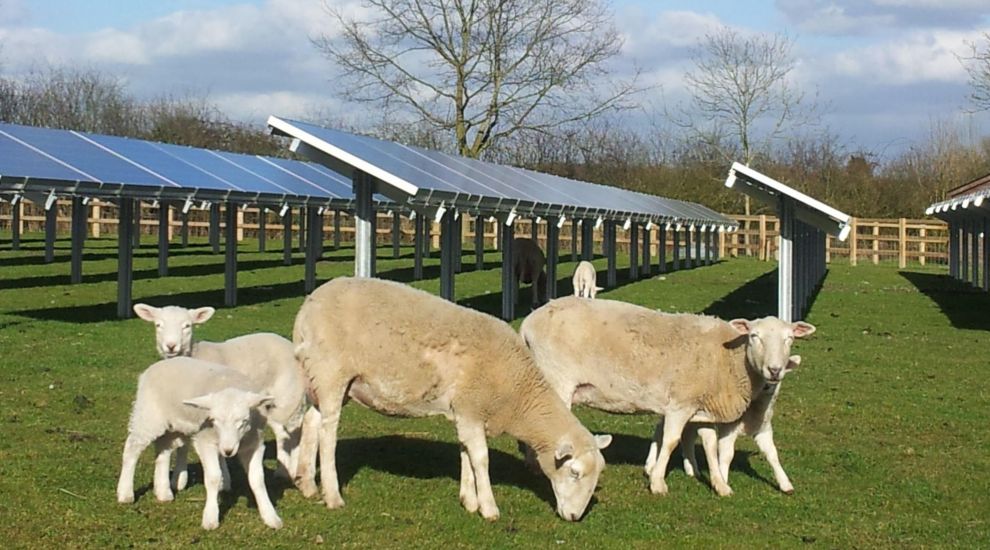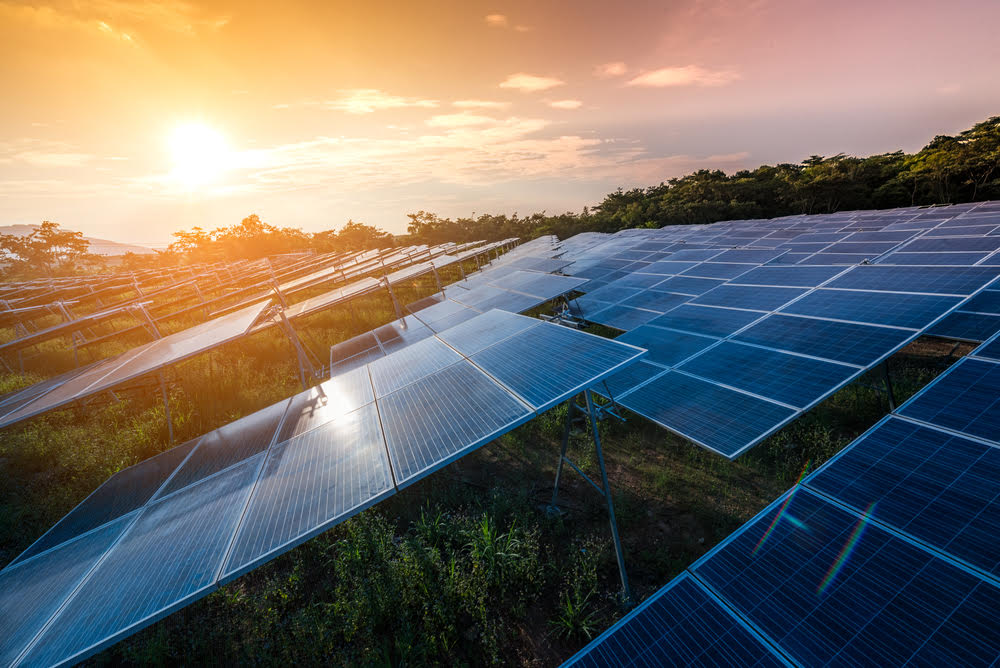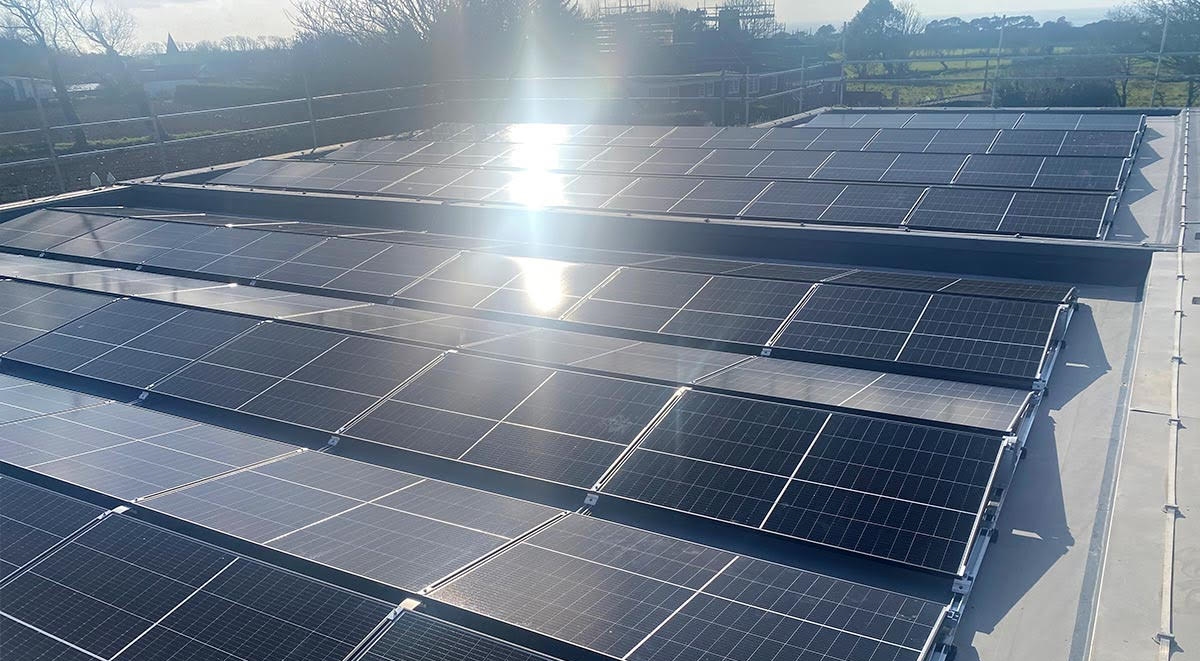


Jersey Electricity has unveiled ambitious plans to install ground-mounted solar panels in fields across the island, which they have assured won't prevent local sheep and farm animals from grazing.
JEC says it has evaluated more than 50 potential sites and narrowed them down to an initial four, all of which will be subject to public consultation and planning.
The company refused to reveal which are the four site under consideration adding none would be ready before 2023 at the earliest.
The sites have been evaluated according to their proximity to a viable grid connection, as well as other factors such as visual impact, particularly on heritage or coastal locations, land quality, ecological impact and opportunity for biodiversity gain, access for construction and geophysical condition.
The company said no land should be taken out of agricultural use as ground-based solar can be combined with other farming such as sheep grazing between rows of panels, for example.
In addition, it said low intensity agricultural use allows more diverse wildflower meadows and native grasses to grow around the modules, creating important habitats for pollinators, insects, birds and small mammals as well as acting as a significant carbon store.

Pictured: Jersey Electricity said no land should be taken out of agricultural use as ground-based solar can be combined with other farming.
“In fact, ground-mounted solar PV is one of the most nature-friendly ways of generating power for the grid, having no noise and a lower visual and environmental impact than other forms of renewable energy generation,” JE CEO Chris Ambler said. “It enables not just continued agricultural use, but also helps wildlife and biodiversity.
“Most of the development site is undisturbed during construction as the mounting structure is fixed directly into the ground and does not require any concrete foundations. Ecological improvements as part of any design will provide a legacy and ultimately the land can be readily returned to open fields at the end of the term of the project.”
Mr Ambler said local ground-based solar arrays could help support the local economy as they will require local construction and maintenance services as well as enhance “diversity and availability of renewable energy sources”.
Jersey Electricity said the “strategically placed” ground-mounted solar arrays could help the island generate 10 times the amount of on-island solar power it does today.
So far, Jersey Electricity has focused on roof-based solar installations such as those at La Collette Power Station, the Queen’s Road Solar Hub, Woodside Farm and the largest solar array in the Channel Islands at Jersey Dairy, which generate a combined one million kWhs (units) a year.
Pictured: The largest solar array in the Channel Islands is at Jersey Dairy.
Three further roof arrays are currently in the latter stages of development including one on the roof of the Albert Bartlett potato processing plant in St. Helier, which is set to produce a further half a million kWhs a year.
Recent advances in solar panel technology, however, mean that higher energy outputs can now be generated using significantly less land than previously, improving the viability of ground-mounted solar.
“We understand islanders’ desire to be more energy independent by increasing local renewable electricity generation and this is recognised in both the Island Plan and Carbon Neutral Roadmap,” Mr Ambler said.
“Recent world events have also highlighted how rapidly threats to energy supplies can escalate and with it, volatility of wholesale energy prices. We believe the improvement in solar PV technology and the reduction in cost means that ground-mounted solar PV could play an increasing and valuable role as part of Jersey’s energy mix and sovereignty, with a series of community ground-mounted solar arrays based next to carefully chosen grid connection points.
“Although small by international standards, these arrays could bring on-Island generation from solar PV up to 10MWp within a few years. That equates to 11million kWhs for the whole community to enjoy via the grid and enough to power more than 1,500 Jersey homes.”
Meanwhile, JT has announced a trial that will see 84 solar photovoltaic (PV) panels installed on the roof of the West Exchange in St. Ouen’s Village.
“We made a clear promise when we launched our Sustainability Strategy that we would apply its principals across every part of our business,” Tom Noel, JT’s Director of Corporate Affairs and Sustainability, said.

Pictured: JT will be installing solar panels on the roof of the West Exchange in St. Ouen's Village.
“One of the most visible demonstrations of that is to install solar panels on prominent sites and we hope that the trial will tell us whether it will work elsewhere. As a technology business, we use a large amount of energy and if we can switch to renewable sources of power where possible, we will make less impact on the planet – using energy generated in the sunniest place in the British Isles.”
It follows a successful project with the Little Green Energy Company in Sark where solar energy powers the JT mobile network.
In Jersey, JT is working with solar energy experts SunWorks to install the panels on the roof of the West Exchange building. The pilot will see the extent to which solar energy can provide a supplementary source of electricity. If successful, it could be used across more sites around the island reducing JT’s reliance on the grid.
“When a company like JT comes to us with plans to use renewable energy in a practical way, we know we are dealing with a client that’s speaking the same language as us,” Mark Brandon, Director of SunWorks, added. “It is important for the larger local businesses like JT to consider where their electricity comes from and make all efforts to use local resources for electricity generation. This supports the global transition to renewables and can deliver significant long-term savings on electricity.”
Comments
Comments on this story express the views of the commentator only, not Bailiwick Publishing. We are unable to guarantee the accuracy of any of those comments.